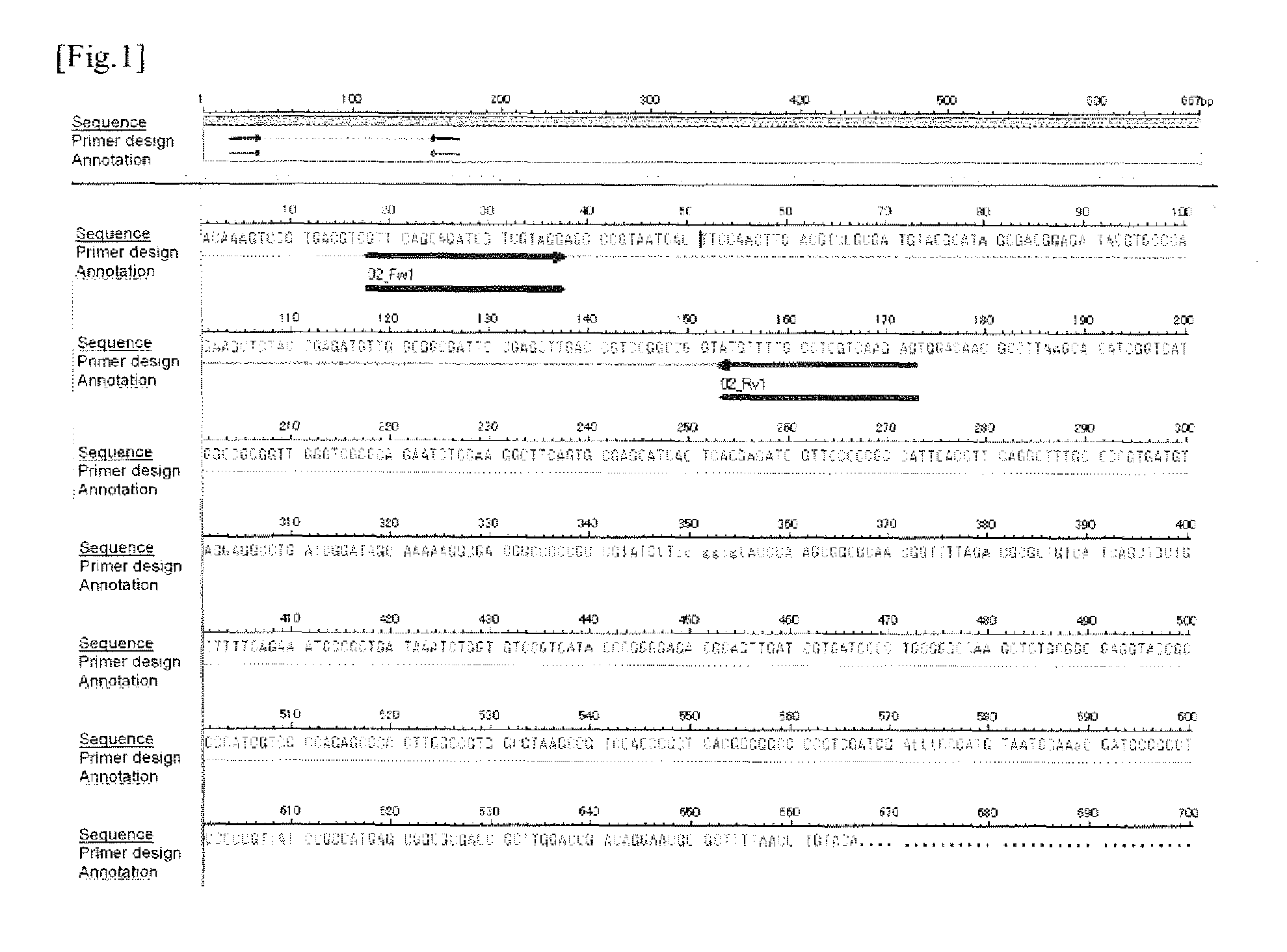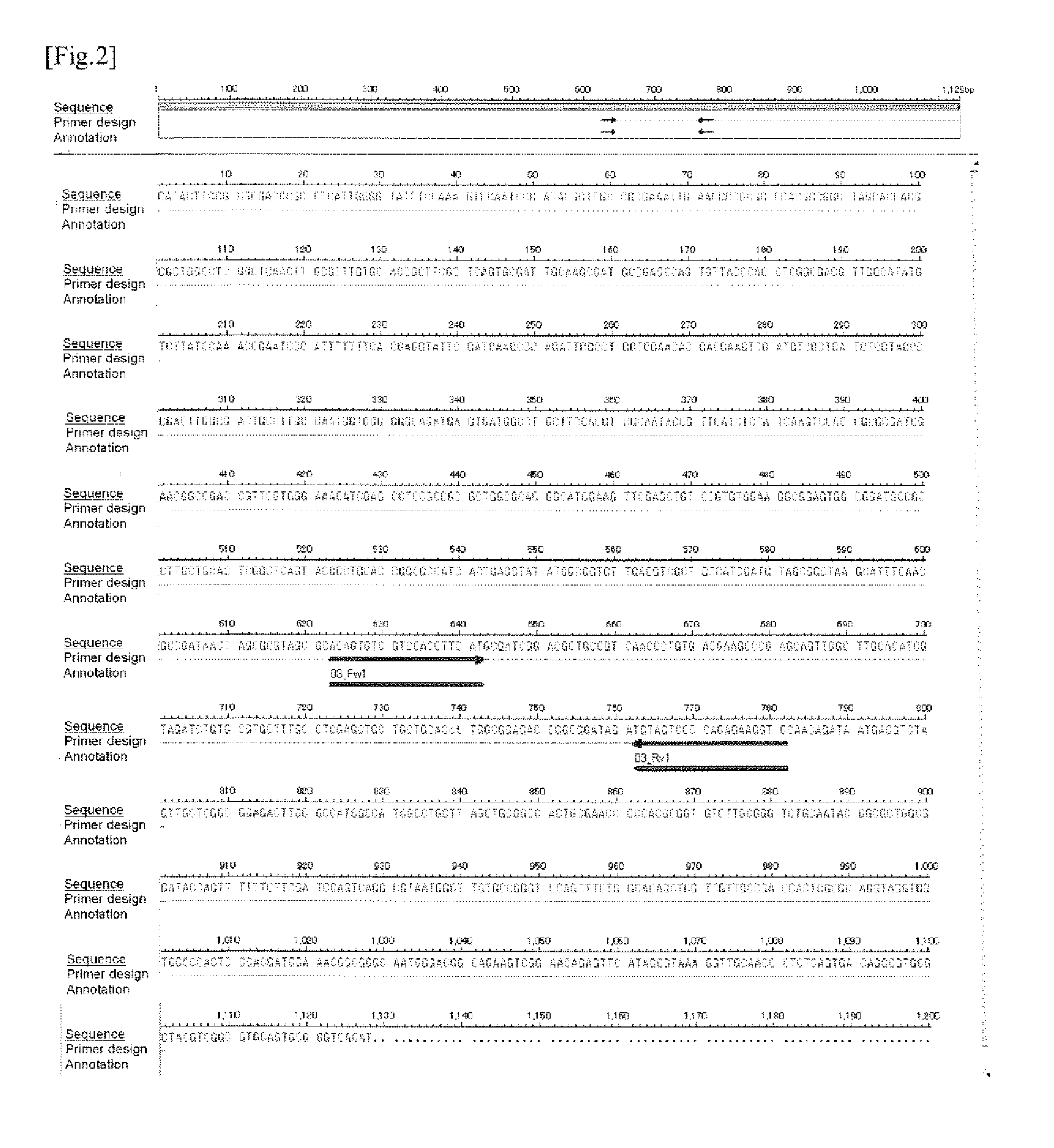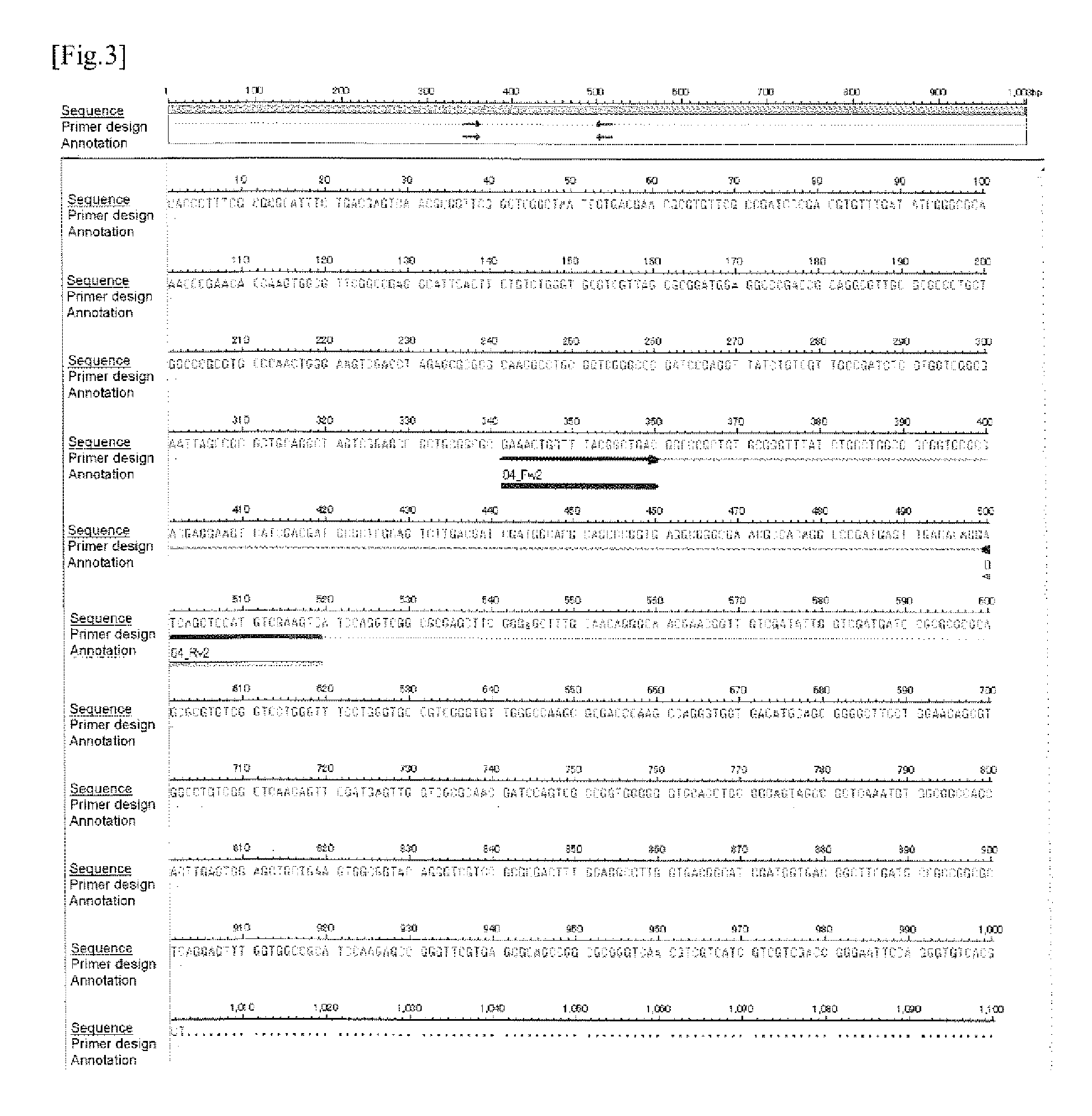Primer and probe for detection of Mycobacterium intracellulare
a technology of mycobacterium and probe, which is applied in the field of primer and probe for detection of mycobacterium intracellulare, can solve the problems of inability to differentiate tuberculosis from non-tuberculous i>mycobacterium /i>diseases, no specific clinical symptoms, and inability to detect and diagnose tuberculosis more quickly, and achieve false positive results in diagnosis, the effect of high accuracy
- Summary
- Abstract
- Description
- Claims
- Application Information
AI Technical Summary
Benefits of technology
Problems solved by technology
Method used
Image
Examples
example 1
Evaluation on Specificity of the Candidate Clone for M. intracellulare
[0492]For the 8 candidate clones obtained in Experimental Example 1, evaluation experiment through the use of PCR amplification system was performed to investigate the potential use of these clones in the specific detection system for M. intracellulare by using nucleic acid amplification detection system.
(1) Synthesis of the Primer for PCR
[0493]Firstly, based on the result of sequence analysis (nucleotide sequence) of the candidate clone 1, the primer sequence for the PCR amplification detection, namely, the oligonucleotides of “5′-GTTCAGCAGATCGTCGTAGG-37” (SEQ ID NO: 9) and “5′-CTCTTGACGAGGCAAAACAT-3”, (SEQ ID NO: 10) were designed using a primer design tool on the web, Primer 3 (Whitehead Institute for Biomedical Research). Hereinafter, the primer having the nucleotide sequence shown in SEQ ID NO: 9 is referred to as “02_Fw1” and the primer having the nucleotide sequence shown in SEQ ID NO: 10 is referred to as...
example 2
Verification of Sensitivity of the Candidate Clone to Detect M. Intracellulare
(1) Synthesis of the Primer for PCR for Detection of M. intracellulare
[0512]Using the same equipment and by the same procedure as described in (1) of Example 1, the primer 02_Fw1 and the primer 02_Rv1 were synthesized.
(2) Preparation of the Probe for the Detection of M. intracellulare
[0513]From the nucleotide sequence shown in SEQ ID NO: 139 (155 nucleotides) which was anticipated to be amplified by the PCR using 02_Fw1 and 02_Rv1 as primers, a sequence “5′-ATACGTGCCCAGAAGCTCTACCGAGAT-3′” to be used as a probe was designed, and an oligonucleotide consisting of this sequence was synthesized (SEQ ID NO: 204; hereinafter, the oligonucleotide probe having this sequence is described as INT 0 2_F1R1_FAMTAM). The 5′-terminal of this oligonucleotide was labeled with a reporter dye of FAM and the 3′-terminal was labeled with a reporter quencher of TAMRA, and thus a labeled oligonucleotide probe (TaqMan™ Fluoresc...
PUM
| Property | Measurement | Unit |
|---|---|---|
| time | aaaaa | aaaaa |
| temperature | aaaaa | aaaaa |
| pressure | aaaaa | aaaaa |
Abstract
Description
Claims
Application Information
 Login to View More
Login to View More - R&D
- Intellectual Property
- Life Sciences
- Materials
- Tech Scout
- Unparalleled Data Quality
- Higher Quality Content
- 60% Fewer Hallucinations
Browse by: Latest US Patents, China's latest patents, Technical Efficacy Thesaurus, Application Domain, Technology Topic, Popular Technical Reports.
© 2025 PatSnap. All rights reserved.Legal|Privacy policy|Modern Slavery Act Transparency Statement|Sitemap|About US| Contact US: help@patsnap.com



